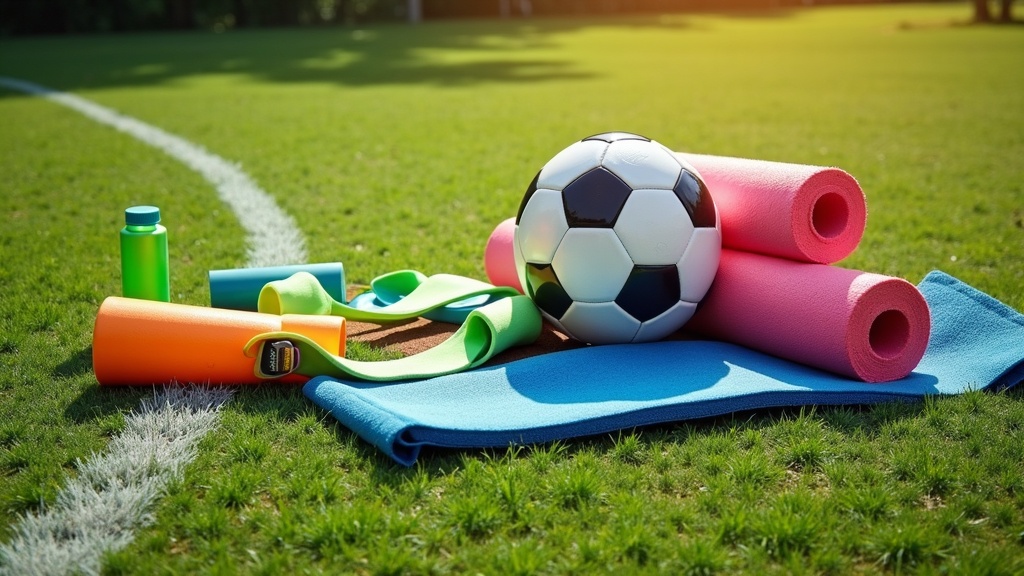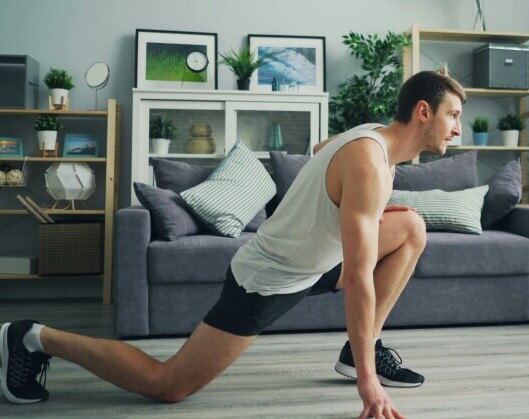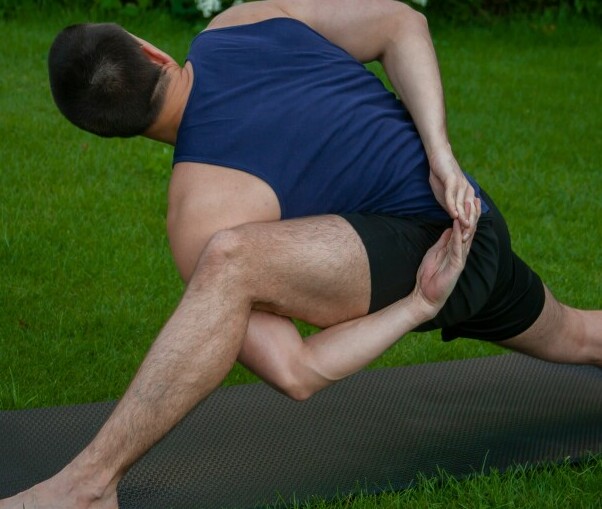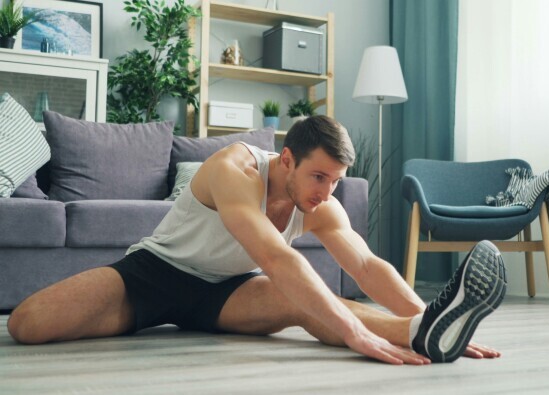
Keeping your body flexible is really important for any soccer player aiming to play at their best and avoid those annoying injuries that can keep you off the field. Soccer can be tough on your muscles, especially with all that sprinting, quick direction changes, and heavy contact. Many injuries come from tight muscles, limited range of motion, or neglecting stretching before and after playing.
If you’ve ever finished a big game or intense practice and woken up feeling stiff, you’re definitely not alone. Regular flexibility exercises can help you feel looser, move better, and recover faster after each session or match.
This article covers 10 soccer flexibility exercises that can really help prevent injury and keep you feeling fresh, whether you’re a weekend player or training for something more serious. We’ll break down each stretch, explain why it’s important, and give easy steps you can follow right away. Taking time for flexibility can set you apart and help you enjoy the game longer.
1. Dynamic Hip Flexor Stretch: Open Up Your Hips

Soccer demands strong, flexible hips for kicking, sprinting, and changing direction. Tight hip flexors can lead to pulled muscles or even back pain. Players often feel tension here after drills or games, making this stretch especially useful.
How to Do It:
- Kneel on one knee with your other foot flat in front, forming a 90 degree angle.
- Push your hips forward gently, keeping your back straight.
- Add a gentle twist towards your front knee for an extra stretch.
- Hold for 20 to 30 seconds, then switch sides.
This move is pretty handy to include in your warmup. Doing it before running and kicking improves hip movement so you play more freely.
2. Hamstring Sweeps: Loosen Up Those Back Legs

Flexible hamstrings are super important in soccer. Tight hamstrings raise your risk for strains and can slow you down. A lot of players overlook this, but regular stretching here can save you pain later.
How to Do It:
- Stand with one foot forward, heel on the ground and toe pointed up.
- Bend your back knee and sweep your hands down towards your toes.
- Switch legs after a few sweeps, repeating 8 to 10 times per side.
Hamstring sweeps are great before training because they get blood flowing without pushing your muscles too far. You’ll get looser legs and better flexibility if you stick with these.
3. World’s Greatest Stretch: Total Body Mobility

This stretch hits the hip flexors, hamstrings, glutes, and upper back all at once. It lives up to its name for any soccer warmup and helps you get ready for high intensity drills. It’s also good for active recovery between games.
How to Do It:
- Start in a high lunge with your hands on the ground inside your front foot.
- Rotate your torso towards your front knee, reaching your arm to the ceiling.
- Step back and swap sides.
Do 5 reps on each side to get ready for just about anything a game throws at you. This move can be especially helpful if you feel stiff before a match or after travel.
4. Standing Quad Stretch: Care for Your Thighs
Your quadriceps can take a beating in soccer. Neglecting them means a bigger chance of strains or even knee pain. Stretching here can give your legs a longer stride and faster recovery time later on.
How to Do It:
- Stand on one foot, grab the ankle of your other leg behind you.
- Keep your knees together and push your hips forward gently.
- Hold for 20 to 30 seconds, then switch feet.
If you want deeper stability, try this with your free arm extended out for balance or even close your eyes. Remember, don’t pull too hard; just enough to feel a comfortable stretch.
5. Calf Wall Stretch: Protect Your Ankles and Achilles
Tight calves are common in soccer players and can lead to ankle sprains or strained Achilles tendons. Flexible calves let you jump, land, and sprint with better control.
How to Do It:
- Face a wall, plant your hands on it, and step one foot back.
- Keep your heel down and gently lean into the wall until you feel a stretch in your calf.
- Hold for 20 to 30 seconds and repeat both sides.
This stretch is pretty useful for finishing any session, especially after runs or intense play. If your calves cramp during games, this will help ease that tightness.
6. Groin (Adductor) Stretch: Sides Matter Too
Your groin muscles are at risk anytime you slide, sprint, or stretch for the ball. Keeping them flexible helps prevent some classic soccer injuries, especially if your play style is aggressive or you tend to do a lot of quick side movements.
How to Do It:
- Sit with your legs extended wide, feet flexed up.
- Lean gently forward from the hips, keeping your back straight, and hold the stretch for 20 to 30 seconds.
- For some variety, try a side lunge or butterfly stretch to hit the inner thighs.
This one’s easy to do at home or on the field, and it really makes a difference. Even if you just add it to your pregame routine, you’ll start to feel more comfortable moving in all directions.
7. Spinal Twists: Maintain Torso Flexibility
Soccer isn’t just about the legs; your spine and torso need flexibility for kicking and turning while staying balanced. Torso twists stop stiffness that can sneak in after practice or long tournaments.
How to Do It:
- Lie on your back with knees bent, feet flat on the floor.
- Drop both knees to one side while turning your head in the opposite direction.
- Breathe deeply, hold 15 to 20 seconds, then switch sides.
A gentle twist is especially nice after games or long practice sessions. It can also help ease low back tightness and is great right before bed.
8. Seated Figure Four Stretch: Release Tension in Your Glutes
Tight glutes can affect everything from your hips to your lower back. This stretch is subtle, but really helpful, especially for relieving tension after lots of running or explosive sprints.
How to Do It:
- Sit on the ground with feet in front, knees bent.
- Cross one ankle over the opposite knee, then lean your upper body forward while keeping your back straight.
- Hold 20 to 30 seconds on each side.
This is a regular in my cooldown because it’s simple and you can really feel the difference if you’re consistent with it. Remember, a loose hip and strong glute team will keep you powering through late in a match.
9. Active Arm Circles: Don’t Forget Shoulders and Upper Body
Soccer players need flexible shoulders for balance, throwins, and shielding the ball. Arm circles are quick and wake up your upper body fast.
How to Do It:
- Stand tall, extend arms out to the side, and make slow circles (10 forward, 10 backward).
- Keep the movement controlled; no need to go too big.
Get these going as part of your wholebody warmup, especially before practice or games. It can also help if your upper body feels stiff from gym work.
10. Ankle Mobility Flex: Stay Quick on Your Feet
Good ankle flexibility lets you pivot, turn, and land safely. It’s often overlooked, but super important for soccer players who want to avoid sprains or strains.
How to Do It:
- Kneel on one knee, plant your other foot flat in front with your toes pointing forward.
- Keeping your heel down, gently push your knee over your toes as far as is comfortable.
- Hold for a few seconds and repeat 6 to 8 times on each side.
This exercise is a quick addition to a warmup or cooldown, and helps keep your change of direction game on point. It makes your movements sharper and more controlled, leading to better performance in tight spaces.
Building a Flexibility Routine for Soccer
Adding these stretches to your warmup gets your muscles primed for action, while finishing practice with them helps with muscle recovery and injury prevention. Rotating through these exercises 3 to 4 times a week is a solid way to keep your range of motion healthy all season long.
- Start each workout with 5 to 10 minutes of gentle dynamic stretches and finish with static holds.
- Mix in foam rolling if you have extra tight spots after matches or intense practice sessions.
- Don’t rush; relax into each stretch, keep your breathing steady, and listen to your body so you don’t overdo it.
- Stay hydrated, as flexible muscles need plenty of water to function properly.
- If you ever feel sharp pain, stop and check in with a coach or physical therapist just to be safe.
Building flexibility is about consistency. Even five minutes a day can add up to real gains in performance and fewer injuries over a season. If you’re learning new stretches, focus on your form more than how far you can go.
Final Thoughts
Regular flexibility training isn’t just good for avoiding injuries; it can help you move better, react faster, and enjoy soccer even more. Sticking with these exercises means fewer aches and faster recovery, making soccer a lot more fun in the long run. A little stretching can take your game up a notch.
Which stretch are you adding to your routine? Feel free to share your favorite flexibility tips below! Remember, sharing what works can help your teammates step up their game as well.

